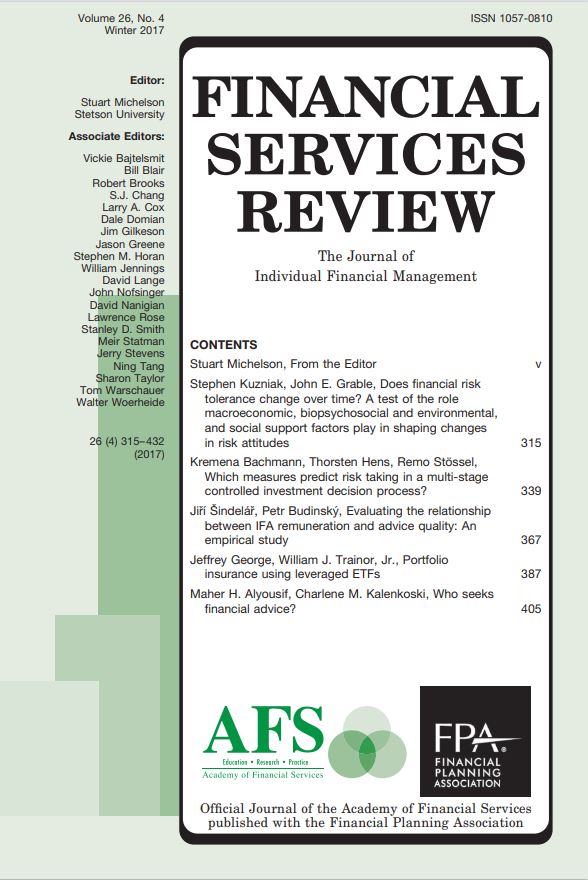Which measures predict risk taking in a multi-stage controlled investment decision process?
DOI:
https://doi.org/10.61190/fsr.v26i4.3371Keywords:
Experience sampling, Risk taking, Risk preferences, Risk attitude, Risk tolerance, Risk profilingAbstract
We assess the ability of different risk profiling measures to predict risk taking along a multistage process that reflects individuals’ discovery of their willingness to take risks. We find that the individual willingness to take risks varies along the process, but its level is always related to a composite measure of the individual risk tolerance. Assessment of the risk tolerance cannot be substituted by a simulated experience, although the latter can improve the perception of the risk and reward potential of the investment and motivate higher risk taking. The risk tolerance measure addresses different notions of risk, but we found that the individual loss aversion is the most powerful predictor of risk taking at all stages of the discovery process. By contrast, we found that neither the self-assessed risk tolerance measures nor the investment experience are suitable for consistently predicting risk taking at different stages of the process.
Downloads
Published
How to Cite
Issue
Section
License
Copyright (c) 2017 Academy of Financial Services

This work is licensed under a Creative Commons Attribution-NonCommercial 4.0 International License.
Author(s) retain copyright and grant the Journal right of first publication with the work simultaneously licensed under a Creative Commons Attribution-NonCommercial 4.0 International License that allows to share the work with an acknowledgment of the work's authorship and initial publication in this Journal.
This license allows the author to remix, tweak, and build upon the original work non-commercially. The new work(s) must be non-commercial and acknowledge the original work.


